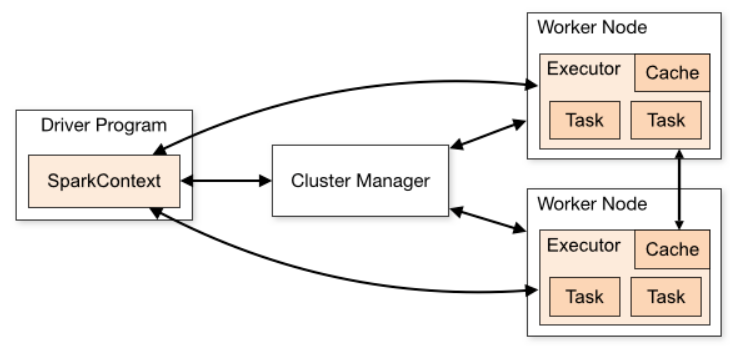PySpark — The Cluster Configuration
Spark Applications hugely relies on the cluster configuration used for execution. It is important to know the cluster sizing beforehand to increase the efficiency providing enough resource for processing.

Spark achieves its power through the distributed parallel processing capability. For better results we always have to tune and estimate the correct configuration from all possibilities.
Spark determines the degree of parallelism = number of executors X number of cores per executor

Lets consider the following example: We have a cluster of 10 nodes, 26 cores/node and 256GB memory/node.

Fat Executors: In case we assign all cores to create a single executor per node i.e. 1 executor/node with 26 cores/node. Downside — It will create a lot of Garbage Collection (GC) issues leading to slow performance.
Tiny/Slim Executors: In case we assign 1 core/executor and create 26 executor/node from the above configuration. Downside — There will be too much of data movement between executors keeping the application busy throughout leading to performance degradation.
So, what can be a possible better configuration? Its seems from several tests that 4 to 5 cores/executors provide the optimum performance and avoids issue of Fat or Tiny Executor.
Lets consider the overheads as well before we run for the final configuration.
Overhead 1: Total Memory/Executor = Memory Overhead + Executor Memory

Memory Overhead for Yarn = Max (384MB or 7% of spark.executor-memory)
Parameter spark.yarn.executor.memoryOverhead can be checked for Yarn configurations.
Overhead 2: 1 core and 1 GB RAM at least for Hadoop daemon and OS per node.
Overhead 3: 0.1% of efficiency loss
Overhead 4: 1 executor for Yarn Application Manager
Now lets finalize our cluster configuration:
- Number of cores/executor = 5
- Number of executor/node = (26 — 1) = 25/5 = 5 (*1 core for Overhead Hadoop and OS)
- Memory/executor = (256–1)GB = (255/5)GB = 51GB – (7% of 51GB) = 46GB ~ 45GB (*excluding all overheads and efficiency loss)
- Total Executors = 10 nodes x 5 executor/node = 50 = (50–1) = 49 executors (*exclude 1 executor for Application Manager)
So, we have to request 49 executors with 5 core/executor and 45GB per executor memory from the Resource Manager for efficient cluster configuration.

Conclusion: There is a famous saying “Same size doesn’t fit all”. The same is for cluster configurations, sometimes same configuration cannot work for every workload. We might need to adjust according to the requirements. And, now we know how to do it.
Checkout my personal blog — https://urlit.me/blog/
Checkout the PySpark Medium Series — https://subhamkharwal.medium.com/learnbigdata101-spark-series-940160ff4d30
Wish to Buy me a Coffee: Buy Subham a Coffee
Top Five
Following are the top five articles as per views. Don't forget check them out:
Buy me a Coffee
If you like my content and wish to buy me a COFFEE. Click the link below or Scan the QR.
Buy Subham a Coffee
*All Payments are secured through Stripe.

About the Author
Subham is working as Senior Data Engineer at a Data Analytics and Artificial Intelligence multinational organization.
Checkout portfolio: Subham Khandelwal